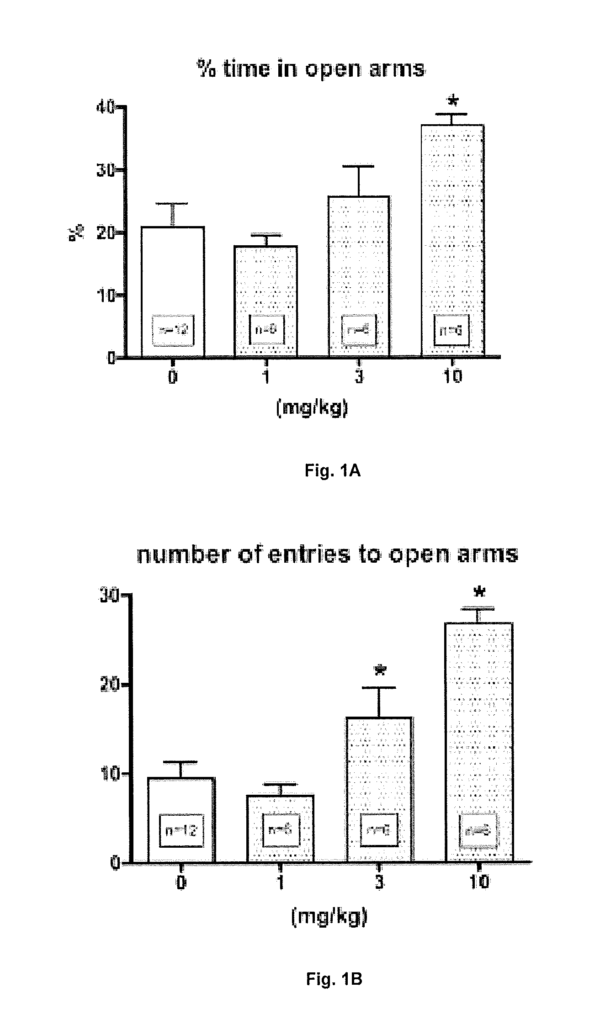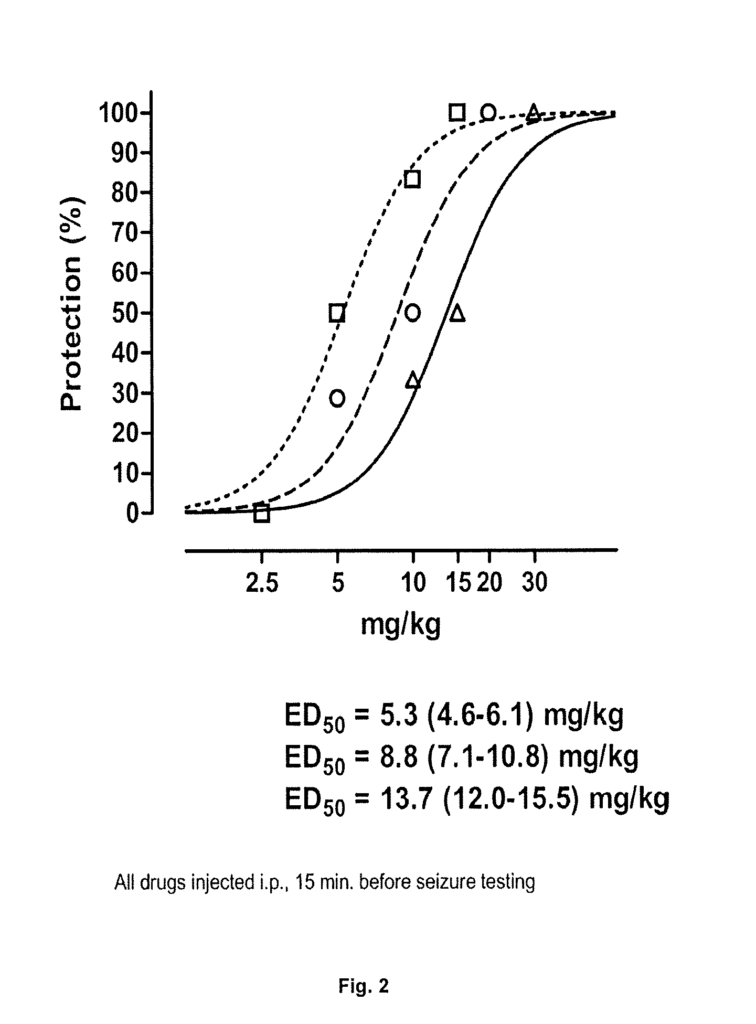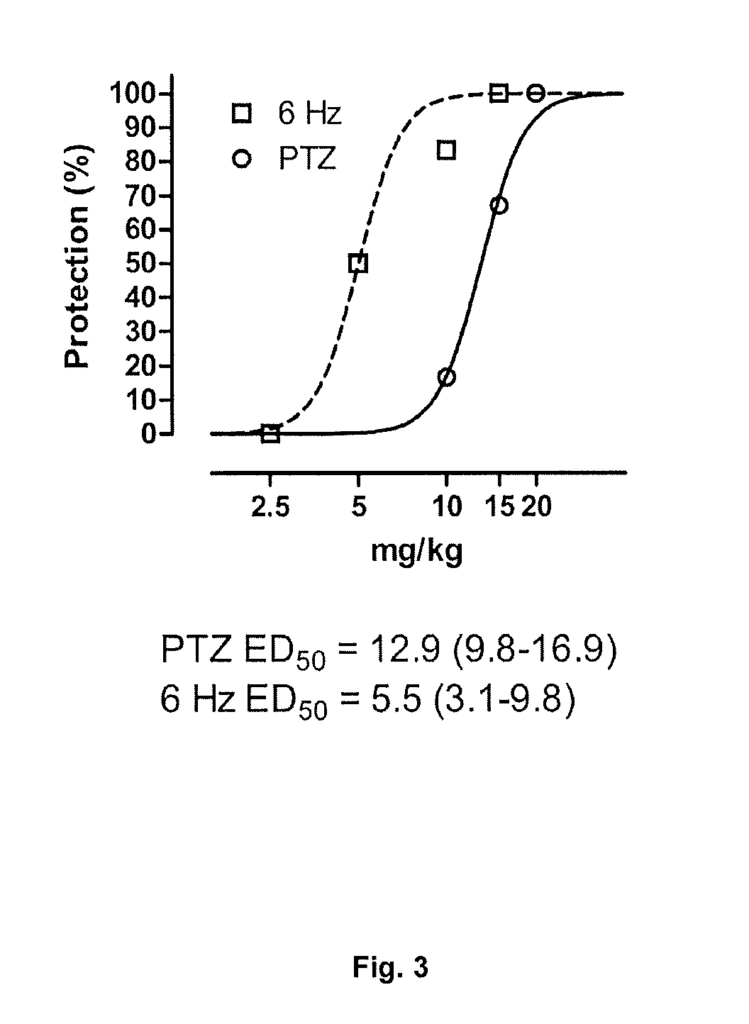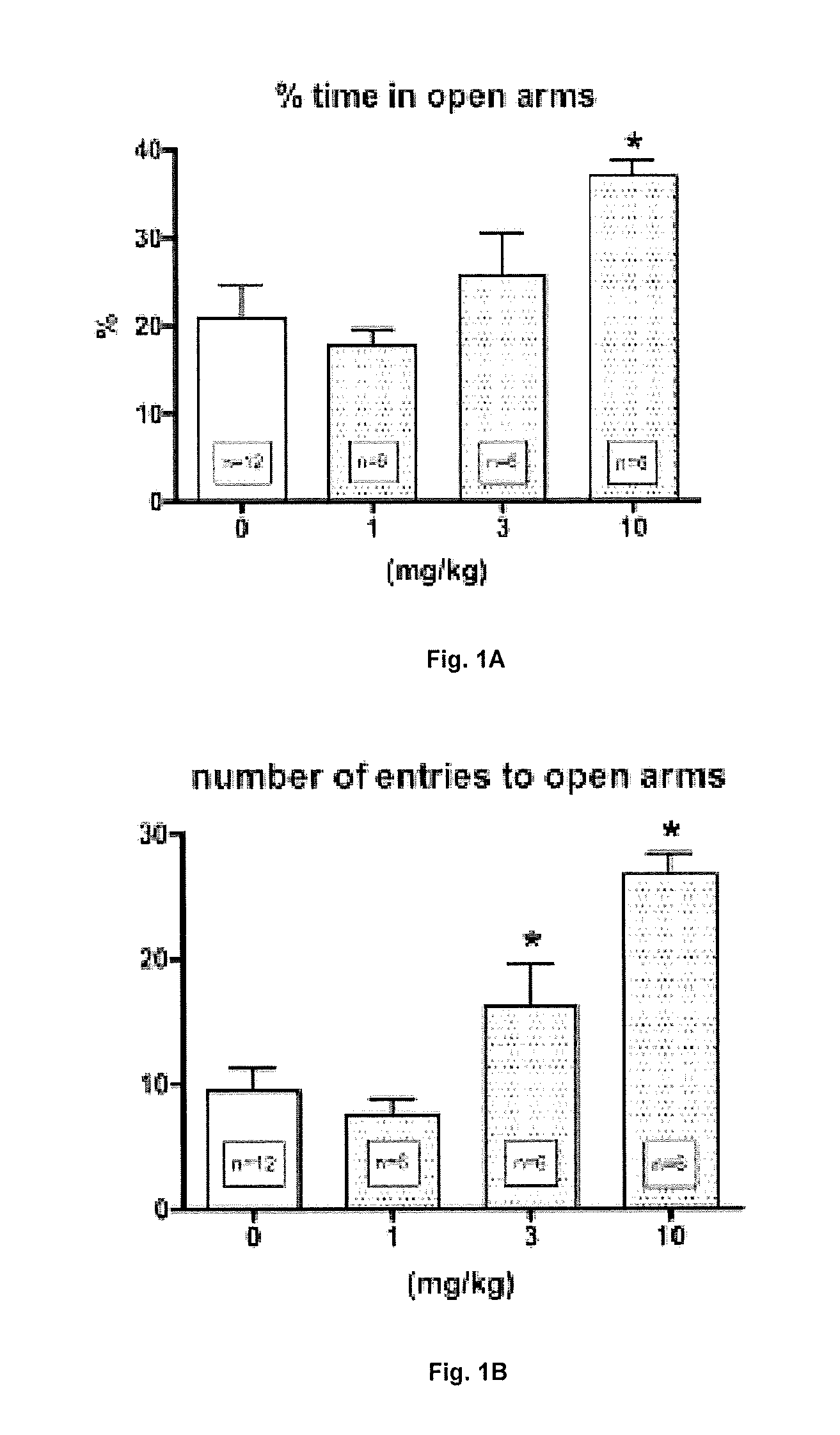Invented by Scott P. Runyon, Michael Rogawski, Edgar Cook, John Kepler, Hernan Navarro, Rafal Kaminski, Matthew Orr, US Department of Health and Human Services, Research Triangle Institute
Steroid compounds, such as Androstane and pregnane, are naturally occurring hormones in the human body. They play crucial roles in regulating various physiological processes, including metabolism, immune response, and brain function. Recent research has discovered that these compounds can also modulate the activity of chloride ionophore receptors, which are involved in the regulation of neuronal excitability.
Allosteric modulation refers to the process by which a compound binds to a receptor at a site distinct from the receptor’s active site, resulting in a change in the receptor’s activity. In the case of chloride ionophore receptors, allosteric modulation by steroid compounds can enhance or inhibit the flow of chloride ions across the neuronal membrane, thereby affecting neuronal excitability.
The potential therapeutic applications of these compounds are vast. Epilepsy, a neurological disorder characterized by recurrent seizures, affects millions of people worldwide. Current treatment options for epilepsy often come with significant side effects and are not effective for all patients. However, studies have shown that certain steroid compounds with allosteric modulation of chloride ionophore receptors can effectively reduce seizure activity, offering a promising alternative for epilepsy treatment.
Furthermore, anxiety and depression are prevalent mental health disorders that can significantly impact an individual’s quality of life. Traditional treatments for these conditions, such as selective serotonin reuptake inhibitors (SSRIs), are not always effective and can have adverse effects. Steroid compounds with allosteric modulation of chloride ionophore receptors have shown potential in alleviating anxiety and depression symptoms by modulating neuronal excitability and neurotransmitter release.
The market for these compounds is expected to grow significantly in the coming years. The increasing prevalence of neurological and psychiatric disorders, coupled with the limitations of current treatment options, has created a demand for novel and effective therapies. Pharmaceutical companies are investing in research and development to identify and develop new steroid compounds with allosteric modulation properties.
However, challenges remain in the development and commercialization of these compounds. The complex nature of the central nervous system and the intricate mechanisms underlying neuronal excitability require extensive research and understanding. Additionally, regulatory approval processes and safety considerations pose hurdles for bringing these compounds to market.
Despite these challenges, the potential benefits of steroid compounds with allosteric modulation of chloride ionophore receptors make them an attractive area of exploration for pharmaceutical companies. The market holds promise for innovative therapies that can provide better treatment options for patients suffering from epilepsy, anxiety, depression, and other neurological and psychiatric disorders.
In conclusion, the market for Androstane, pregnane, and other steroid compounds with allosteric modulation of the chloride ionophore receptors is a rapidly expanding sector in the pharmaceutical industry. These compounds offer potential therapeutic applications in the treatment of epilepsy, anxiety, depression, and other neurological and psychiatric disorders. As research and development efforts continue, the market is expected to grow, providing hope for improved treatment options and better outcomes for patients.

The US Department of Health and Human Services, Research Triangle Institute invention works as follows
This invention describes compounds of Structures 1 and 2 and their use as allosteric moderators of the GABA chloride ionophore to alleviate stress and anxiety, mood disorders and seizures, depression and treatment of drug and alcoholic abuse. It also addresses memory and premenstrual disorder, neural system damage, and treatment of drug or alcohol abuse.

Background for Androstane, pregnane, and other steroid compounds with allosteric modulation of the chloride ionophore receptors
Field of Invention
The present invention is a steroid compound containing androstane or pregnane, which can be used to treat stress, anxiety and mood disorders. It also treats depression and seizures.
Discussion of the Background
The present invention covers methods and compounds related endogenous metabolites and pregnane steroids. Certain endogenous steroids including allopregnanolone (3?-hydroxy-5?-pregnane-20-one) and the A-ring reduced metabolite of progesterone are potent stereoselective positive allosteric modulators of GABA receptors (Belelli and Lambert, 2005). Like other agents that potentiate GABA receptor activity, these neurosteroids exhibit anxiolytic and sedative-hypnotic effects, as well as anticonvulsant and general anesthetic properties. Allopregnanolone, A-ring reduced and other neurosteroids lack the classical hormonal activity that is mediated by nuclear receptors. Natural neurosteroids may be therapeutically useful due to their modulating GABA receptor activity (Gasior, et. al., 2000). They do not, however, have the best properties for drug substances. The natural neurosteroids are converted into hormonally active substances by metabolic conversion (Rupprecht 2003). They also have a poor bioavailability. There is a need for improved synthetic analogs that have better pharmacokinetics and pharmacodynamics. Structure modifications at the 3-position can inhibit metabolism of the secondary substituted 3-hydroxyl, while retaining GABA receptor modulating properties (Hogenkamp and colleagues, 1997). A ganaxalone analog, the 3-methyl derivative of allopregnanolone is being tested in clinical trials for epilepsy. (Monaghan, et al. 1999; Rogawski 2006).
The GABA receptor modulating properties can be maintained by substituting the allopregnanolone at position 17 with functional groups. For example, the naturally occurring neurosteroids, allotetrahydrodeoxycorticosterone (5?,3?-THDOC), androstenediol, and androsterone, which have O?CCH2OH, alcohol, and keto substituents at the 17-position have GABA receptor modulating activity as does the prototype allopregnanolone, which has an acetyl substituent at the 17-position. The synthetic 17?-carbonitrile analogue also exhibits GABA receptor moderating potency and efficacy comparable to allopregnanolone.
It is interesting to note that the natural (16-17 unsaturated pheromone), 3?-androstenol does not contain a 17-position substituent, but still retains GABA-receptor modulating activity (Kaminski and al., 2006). These data, taken together, indicate that GABA modulators built on a neuroactive steroid framework are critical for treating a wide range of diseases.
The present invention aims to provide novel pregnane, androstane and GABA-active allosteric steroids.
The present invention also aims to provide methods of using these novel compounds for the treatment of epilepsy, convulsions and seizures, depression, alcohol and drug abuse, anxiety and memory problems in humans and animals.
The discovery of steroid-derived compounds with formula 1, 2 or 3 below has satisfied these and other objectives of the present invention.
The present invention extends the structural features of pregnane, androstane and other steroids that were previously associated with GABA allosteric activity. The invention provides a range of compounds that can be used to produce additional analogs, with improved pharmacological properties. The prior art describes the usefulness of the 17-acetyl substitute in steroidal 3-ols to enhance GABA activity. In this study, we demonstrate that a 17-nitro group or a 17-thioalkyl groups serve as bioisosteres for 17-acetyl. When combined with the 3-OH-5-H of pregnane and androstane steroid system, full agonist activity is observed and Equipotency with allopregnanolone for GABA activity in the [3H] flunitrazepam test. These derivatives also show equivalent GABA activity to allopregnanolone when tested with [35S]TBPS.

The effect of aromatic substitutions at the 11?position on GABA allosteric activity has never been examined before for androstane or pregnane steroid having a 5?H, 3?OH. This work shows that androstane or pregnane steroid with a 3?-OH, 5?-H have enhanced GABA allosteric activity compared to the allopregnanolone using the [35S]FBPS GABA assay and the [3H]flunitrazepam test. Novel structural features disclosed in this application include the 17?-nitro group, 17?-thiomethyl group, and the 11?-(4-dimethylaminophenyl) group. These functional groups have different properties in terms of solubility, metabolism, and pharmacokinetics compared to the compounds 17?-acetyl or 11?-H from previous inventions. These compounds may be used to help with formulation or dosage. Some of these compounds can also be used as intermediates to further modify the compound. These compounds could be used in the treatment of epilepsy and depression, alcohol and drug abuse, memory problems, premenstrual disorder, and neural system damage, among other potential therapeutic areas.
The steroid derivatives that are included in this invention are those that contain the structural formulae 1, 2 or 3.
In the context of this invention, heteroatoms include oxygen, nitrogen and sulfur. Halogen is fluorine or chlorine. Halo means bromine, iodine or bromine. Aralkyl is a C1 to C4 alkyl group, C2 to C4 alkenyl group, or C2 C4 alkynyl bearing an aryl substitute. Lower alkyl is a group of C1-C6 aryls. Heteroaryl is a unit consisting of 5-12 non-hydrogenatoms, with 1-5 heteroatoms. It can be linked or fused together.
Heteroaralkyl” means any C1-C4 aryl, C2-C4 arylenyl or C2-C4 acynyl group with a heteroaryl substitute.
?Optionally substituted? “?Optionally substituted?” means that the heteroatom(s) or halogens, or alkyl groups with 1 to 4 atoms, or alkenyl or alkynyl with 2 to 4 atoms, or cycloalkyl with 3 to 7 atoms, or aryl with 6 to 12 atoms, or heteroaryl with 6 to 12 atoms, or heteroaryl with heteroaryl may be substituted further with one or two heteroatoms or halogens or aryl The substitution can occur directly on the CH2 groups in cyclic heterocycles. When their valency allows, heteroatoms can be substituted within the carbon chains or by attaching to them by single or double bond. This definition includes, for example, “CH2CH2C (?O),?CH2(C?)OCH3, ‘CH2CH2OCH3,’?CH2CH2CH2OH?, or CH3CH2CH2O?”, as well as “CH2CH2C (?O), NH2, and CH3CH2C (?O), NH?. This definition includes?CH2CH2C(?O)H,?CH2(C?)O)CH3, CF3CC?, CH2CH2COOCH3, CH3CH2COO/CF3CC?, and CF3CC.
In all cases, where valency or steric considerations allow, alkyl (alkenyl), alkynyl (alkynyl), and cycloalkyl group may contain double or triple bonds, and/or branched chain.
In one embodiment of the invention, the group R1 as it appears in structure 1 may be H or (optionally substituted) C1-4 alkyl, C3-6 cycloalkyl, C2-4 alkynyl, C2-4 alkenyl, C6-10 aryl, 2-arylsubstituted ethynyl, arylsubstituted C1-4 alkyl, arylsubstituted C2-4-alkenyl, arylsubstituted C3-6 cycloalkyl, heterocycle; 2-heterocycle-substituted ethynyl, heterocycle-substituted C1-4 alkyl, heterocycle-substituted C2-4-alkenyl, or heterocycle-substituted C3-6 cycloalkyl;
Or HCO, if R14 is R2. Or (optionally substituted), C1-18 alkyl CO? The only difference is that R14 does not have a CH3 bond when R1,R2,R3,R5,R6,R8,R9,R10 and R11?H and R4?CH3, there are no double bonds, and the R14 is not present in C2-18 aryl CO? or heterocycle-CO? R14 can be substituted with C1-18 alkyl, C2-18 aryl, C6-10 aryl, or heterocycle-CO? Or R14 can be HO?SO2 or a salt thereof. Or a salt of the same or R2 can be NR15R16 where R15 may be H, OH, (optionally) substituted C1-4 alkyl or C3-6 alkyl or C2-4 cycloalkyl or C2-4 aryl or heterocycle. or heterocycle-CO? Or heterocycle-CO? R16 is H?CO? or heterocycle-CO? ;
R3 can be H, halogen or cyano. It may also be substituted with C1-4 alkyl or C3-6 cycloalkyl.
Click here to view the patent on Google Patents.

Leave a Reply